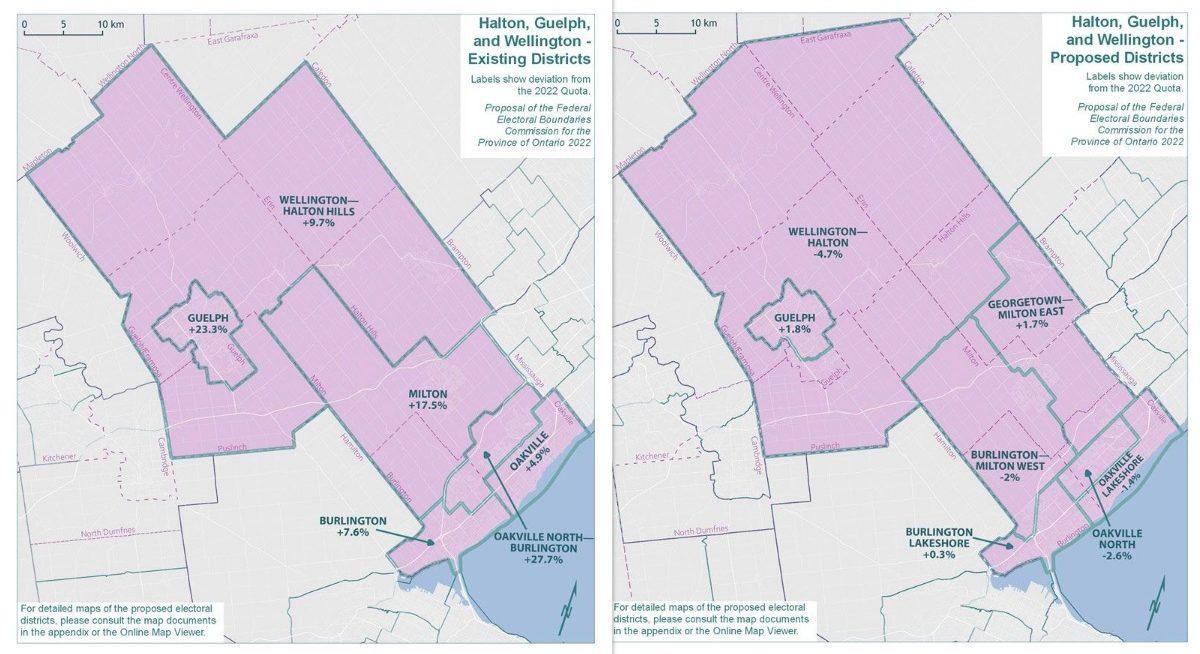WELLINGTON COUNTY – The electoral riding boundary may look a little different in Wellington-Halton Hills when the next federal election comes around.
The Federal Electoral Boundaries Commission for Ontario has proposed a new electoral map, which introduces several changes to Ontario’s federal electoral district boundaries.
The proposed changes would add one more riding for Ontario in the House of Commons, bringing the total to 122.
The commission, an independent panel, is tasked with redrawing the map to reflect changes in population every 10 years.
Boundaries are reviewed after every second census to ensure changes in population and settlement patterns don’t result in large discrepancies in the number of people in each riding.
As of the 2021 census, Ontario had 14.2 million people, up nearly 1.4 million since 2011. Divided up among 122 federal ridings, the quota for each riding is 116,590.
Under a proposal released earlier this month, the current boundaries of the Wellington-Halton Hills riding would be revised to accommodate the new quota.
The changes, if passed, wouldn’t take effect until at least 2024.
The proposed boundary changes are necessary to correct wide variations in voter equality that have emerged across the province over the past decade due to population changes, notes an Aug. 19 press release.
“In exercising its mandate under the Electoral Boundaries Readjustment Act and given the allocation of one additional district to Ontario, the commission found it necessary to propose many new electoral boundaries to correct wide variations in voter equality that have emerged across the province over the past decade due to population change,” said Lynne Leitch, chair of the three-member commission, which also includes Karen Bird and Peter John Loewen.
As per the proposed changes, the number of ridings in the Halton, Guelph and Wellington region have been increased from six to seven.
According to the census, the population of Halton, Guelph and Wellington grew by 18.4%, from 680,234 in 2011 to 805,299 in 2021.
As of 2021, the Wellington-Halton Hills population was sitting at 127,873, up from 115,885 in 2011. The proposed boundary changes, if approved, would put the population at 111,155.
As per the proposed changes, the revised district of Wellington-Halton Hills will retain portions of Guelph, bringing the population of Guelph closer to the provincial quota.
The commissioners are currently in the process of seeking input on the proposed changes, including the proposed electoral boundaries and names.
A virtual hearing will be held Sept. 28 to gather public input on the proposed boundary changes to Halton, Guelph and Wellington.
The proposal can be found at www.redistribution2022.ca.



